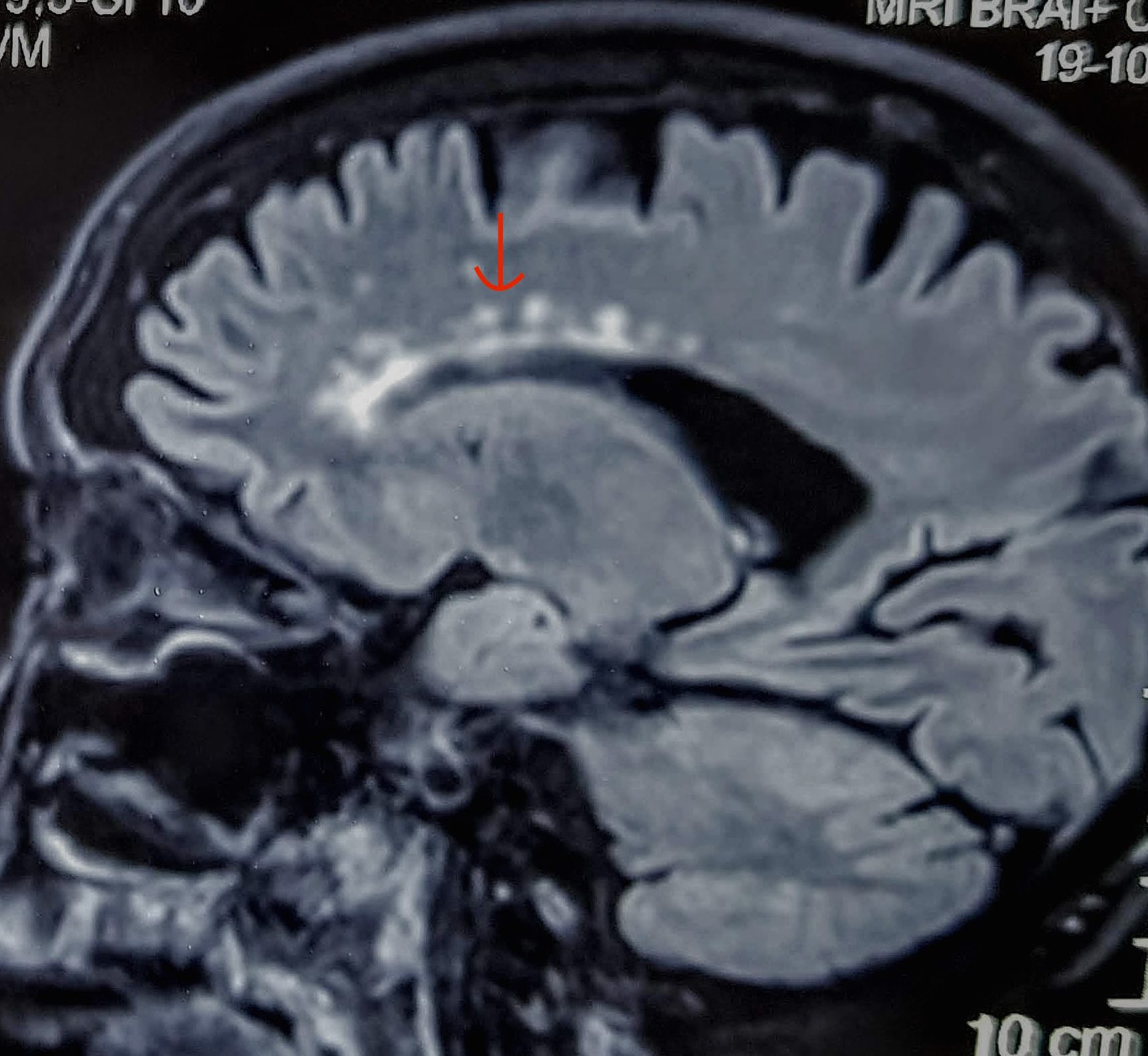Sturge-Weber syndrome (SWS) is a sporadic phakomatoses and is characterized by angiomatosis of skin, eye and meninges. . Patients present with epilepsy and developmental delay since childhood. Clinical examination reveals reddish discoloration of face (referred to as port wine stain), sclera and limbs, usually on one side of body. Imaging findings of SWS are typical.Continue reading “MRI BRAIN FINDINGS IN STURGE-WEBER SYNDROME”
Author Archives: Dr Sudhir Kumar MD (Medicine) DM (Neurology)
Bilateral (Cerebral) Ptosis due to Right Hemispheric Stroke
Ptosis refers to drooping of eyelids. Ptosis occurs due to weakness of levator palpebrae superioris, the muscle responsible for eyelid elevation. Ptosis can occur due to a variety of causes, including nuclear, infranuclear and supranuclear causes. The commonest causes of ptosis are infranuclear due to involvement of oculomotor nerve (3rd nerve palsy), the LPS muscleContinue reading “Bilateral (Cerebral) Ptosis due to Right Hemispheric Stroke”
MYOCLONIC JERKS secondary to POST-CARDIAC ARREST CEREBRAL HYPOXIA
This patient suffered “out of hospital” cardiac arrest. Cardio-pulmonary resuscitation (CPR) was done for about 30 minutes, after which cardiac rhythm was restored. Patient remained comatose after resuscitation. He was on life supports including mechanical ventilation and multiple inotropes. He had frequent myoclonic jerks. Note that the myoclonic jerks are asymmetric, affecting mainly the leftContinue reading “MYOCLONIC JERKS secondary to POST-CARDIAC ARREST CEREBRAL HYPOXIA”
POLYMINIMYOCLONUS
Polyminimyoclonus refers to involuntary, jerky, small amplitude, tremor-like movements, most commonly seen in hands. The commonest cause is degenerative anterior horn cell disease, commonly known as motor neuron disease or amyotrophic lateral sclerosis. These tremor-like movements (polyminimyoclonus) correspond to fasciculations in forearm muscles.
HEMIPLEGIC GAIT
A person with left spastic hemiparesis. Note the flexion at elbow with internal rotation of left upper limb. The lower limb too has extension at left hip and left knee. While walking he circumducts the left lower limb (external rotation with movement in an arc).
PSYCHOGENIC NONEPILEPTIC SEIZURES
Psychogenic non-epileptic seizures (PNES) are common in clinical practice. The diagnosis of PNES is commonly missed or delayed. The diagnosis of PNES should be suspected, if a person has repeated seizures despite being on good anti-epileptic drugs. Other features that help in accurate diagnosis of PNES are: 1. The semiology of non-epileptic seizure is unlikeContinue reading “PSYCHOGENIC NONEPILEPTIC SEIZURES”
Extensive CEREBRAL VENOUS SINUS THROMBOSIS with COLLATERAL formation
35-year old gentleman presented with episodes of headache for the past two weeks. There were no other significant past history. CT brain showed features of 1. Right transverse sinus thrombosis (red arrow), 2. Internal cerebral veins thrombosis (thin yellow arrow), 3. Straight sinus thrombosis (orange arrow), 4. Superior sagittal sinus thrombosis (thick yellow arrow) MRContinue reading “Extensive CEREBRAL VENOUS SINUS THROMBOSIS with COLLATERAL formation”
ESSENTIAL TREMORS affecting ONE Arm and Head
Essential tremors (ETs) are the commonest causes of tremors, along with Parkinson’s disease (PD). It is usually thought that tremors affecting one hand are typical of PD, and in ET, tremors affect both hands. However, in clinical practice, it is not unusual to see patients with ET, who have tremors affecting only one hand. TheContinue reading “ESSENTIAL TREMORS affecting ONE Arm and Head”
Jaw Tremors and Asymmetric hand Tremors in a Case of Essential Tremors
A 65-year old lady presented with six years history of tremors affecting both upper limbs, left more than right. I had periodically seen her during these 6 years. Tremors were of postural type and affected left upper limb more than the right upper limb. She developed jaw tremors for the past 3-6 months, which wereContinue reading “Jaw Tremors and Asymmetric hand Tremors in a Case of Essential Tremors”
HEMIPLEGIC GAIT
Hemiplegia refers to weakness of one half of the body, mostly affecting the upper and lower limbs. In the acute phase, there is hypotonia and weakness of affected limbs. As recovery occurs over the next few days to weeks, muscle tone increases, resulting in spasticity. In this video, you can see the hemiplegic gait, affectingContinue reading “HEMIPLEGIC GAIT”
